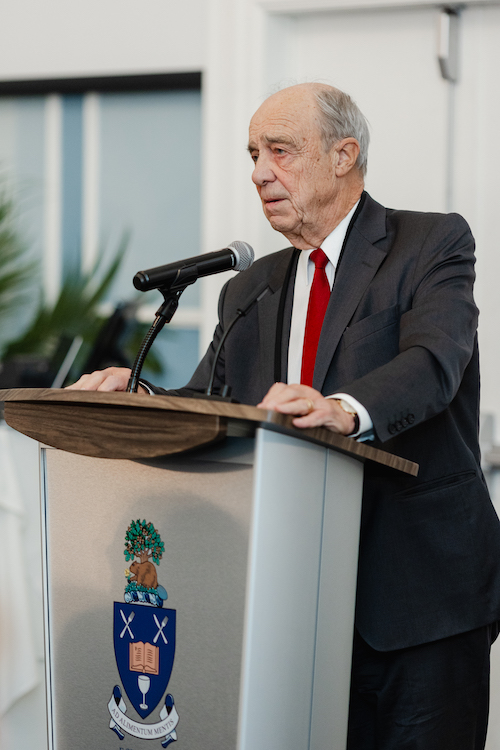Dr Erling Norrby, Professor, Center for History of Science, the Royal Swedish Academy of Sciences
100th Anniversary dinner celebrating the Nobel prize to banting and macleod, November 27, 2023
Optimal prerequisites for a Nobel Prize in physiology or medicine?
When Alfred Nobel on his own formulated his handwritten final will, his idealistic intentions were clear. In the three science disciplines physics, chemistry and physiology or medicine he wanted to identify an individual who, during the previous year, had made a discovery that in an unexpected and significant way advanced their development. By providing a solid financial support he hoped to accelerate further important contributions by the selected individual. The discovery of means to isolate and purify insulin provided an excellent example of what he had in mind. When the purified product was used for treatment of humans with life-threatening diabetes, restitution to a normal physiological state was achieved. In addition, the access to purified insulin advanced insights into fundamental characteristics of protein structure.

The 1923 Nobel Prize committee at the Karolinska Institute on recommendation by a recent recipient of the prize, the Dane August Krogh, decided to propose a prize to Frederick G. Banting and John J.R. MacLeod. However, it took several meetings by the Nobel Committee and the 19 members of the College of Teachers at the Institute before a final decision could be taken on October 18. Because of this late decision, neither Banting nor MacLeod could come to Stockholm to receive their insignia, the diploma (Fig. 1) and the Nobel Prize medal. It was received by the Commonwealth Minister of International Affairs. The decision to let Banting and Macleod share the prize, both at the time and later has been the subject of intense discussions, not least since Banting decided to share his prize money with Charles H. Best and MacLeod, consequently, split his half of the prize money with James Collip.
Both Best and Collip later performed high quality research which was evaluated by subsequent Nobel Committees. Best was nominated 14 times during 1950-54 mainly by his Ph.D. supervisor Henry Dale, who had shared a Nobel prize in physiology or medicine in 1936. The future Swedish Nobel laureate Ulf von Euler provided support for the nomination. Best was declared worthy of a prize, but he never received it. Collip was nominated 11 times between 1928 to 1956 and four full evaluations were made, the last one in 1951 by Einar Hammarsten, an influential professor of chemistry at the Institute. Collip’s work was not considered worthy of a Nobel Prize. MacLeod continued supervising high quality research work throughout his career, whereas Banting after his work on isolating insulin, was never to make any further important contributions to science.
The availability of purified insulin was critical for Frederick Sanger’s characterization of the complete amino acid sequences of the two chains of the molecule and their connections by disulphide bonds, which earned him the Nobel Prize in chemistry in 1958, and for the same prize six years later for Dorothy Hodgkin. However, the latter scientist and collaborators did not finish their work on the three-dimensional structure of the molecule until 1935 after 35 years of work (Fig. 2). It can also be added that insulin was the target antigen when Rosalyn Yalow pioneered the development of the radioimmune assay which brought her a shared Nobel Prize in physiology or medicine in 1977. Finally, it can be mentioned that insulin was the first remedy produced by recombinant technology to be accepted for general use, a discovery recognized by the half Nobel Prize in chemistry in 1980 to Paul Berg.
“During the 100 years that have passed since the prize for the discovery of insulin was awarded, 19 more scientists born in Canada have been awarded Nobel Prizes in different disciplines. It was my great pleasure and honor to join in the centennial celebration of the insulin prize and it is my hope that this award and those that have followed will inspire young scientists working in high quality academic environment in Canada to make new powerful discoveries, potentially to become recognized by Nobel Prizes.”
Back to >> Dinner Program and Speeches